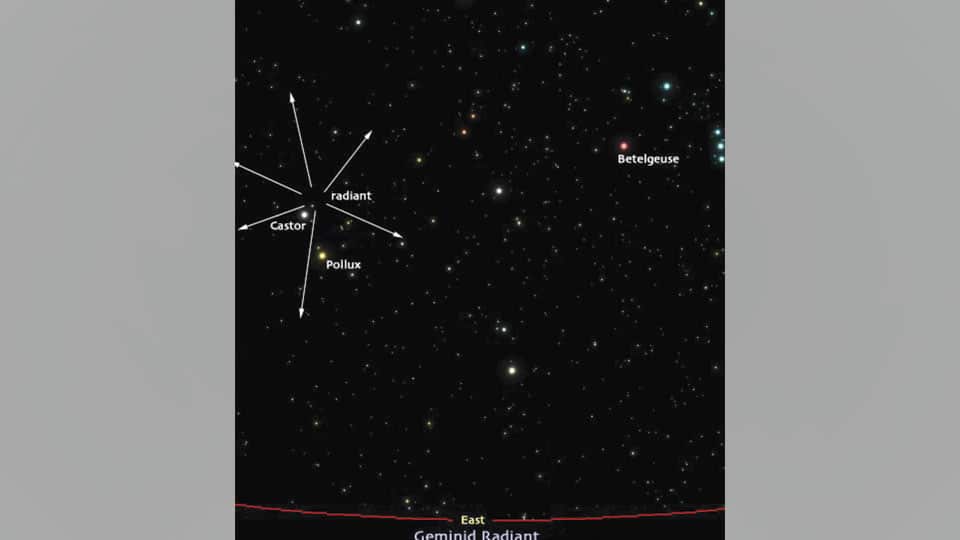A ‘shooting star’ or ‘meteor’ is caused by a tiny particle of dust entering Earth’s atmosphere. As it plunges downward, it experiences collision with air molecules, and the friction generated causes the particle to glow and eventually burn up completely. Most meteors burn up at altitudes of around 100 km. It is an exceptional celestial manifestation for sky observers that the extravagant yearly ‘Geminid’ showers will illuminate the night sky during Dec.13 – 15. The Geminids are beautiful, prolific and reliable shower.
On Dec. 14 and 15, Indians are fortunate to witness the dazzling Geminid meteor showers. Dry, clear air will help a lot with the lunar glare, but it will be difficult to achieve maximum rates of 20 Geminids/hour even at the best sites.
Geminids are medium-speed meteors. The shower has a skew rate profile, with activity dropping speedily after maximum. At the same time, the proportion of bright meteors is higher during and after maximum than on pre-maximum nights. The Geminids are worth watching for one or two mornings before the peak; there will be slightly less moonlight interference, and some locations will get a short moonless period before morning twilight.
In other parts of the world, such as Europe, Asia and Australia, the Geminid peak will come during local daylight hours. Still, observers in these parts of the world should see a very good meteor display on the night of Dec. 13-14, with rates of about one meteor per minute likely. This time in India Geminids are clearly visible in the night sky during 2 am to 4 am.
A productive Geminid watch can actually begin as early as 10 pm because the showers radiant is already fairly high in the eastern sky by then. The Geminids will be especially noticeable right after the Moon sets.
—Dr. S.A. Mohan Krishna, Amateur Astronomer
Follow Star of Mysore on Instagram www.instagram.com/starofmysore








Recent Comments